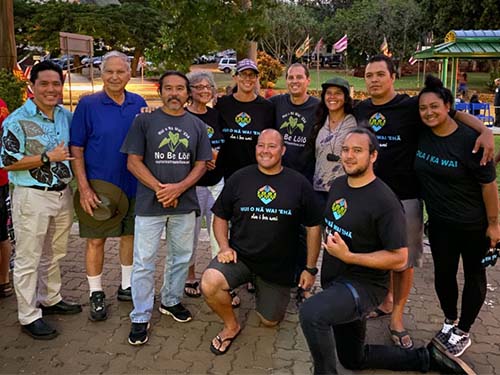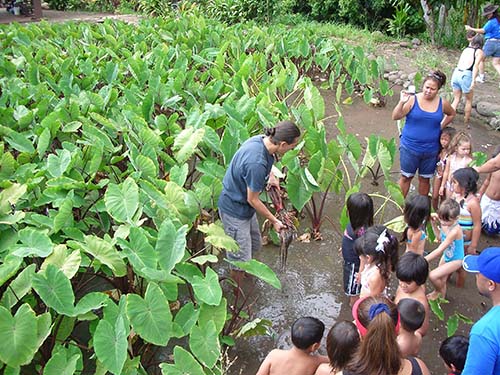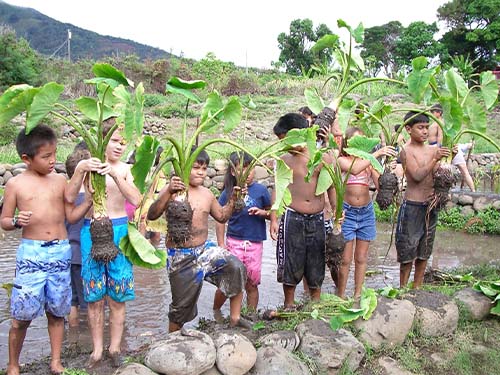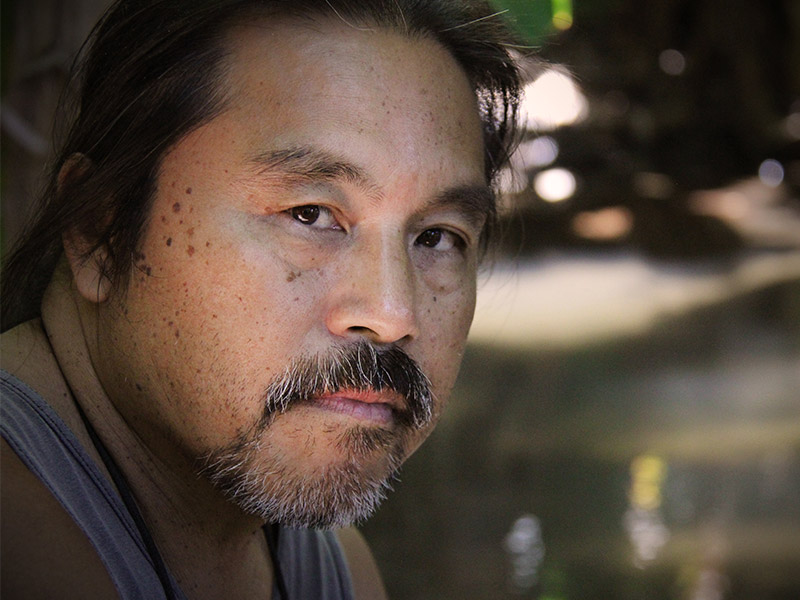
Hui o Nā Wai ‘Ehā, 2019
Kaulana Nā Wai ‘Ehā: famous are “The Four Waters” of Waihe‘e, Waiehu, Wailuku, and Waikapū! The Nā Wai ‘Ehā region in central Maui was the island’s historical epicenter, supporting the largest continuous region of wetland kalo cultivation in all Hawai‘i nei. This land then became ground zero for the arrival of the plantations and their taking of stream and ‘auwai flows as private property. The arc of history came full circle in 2004, when Hui o Nā Wai ‘Ehā and Maui Tomorrow Foundation took legal action to restore streamflows and stop the illegal hoarding of water by Wailuku Water Company (formerly Wailuku Sugar) and Hawaiian Commercial & Sugar.

Hui President Hōkūao Pellegrino
The case went all the way to the Hawai‘i Supreme Court, which in 2012 overturned the Water Commission’s 2008 decision to leave the streams mostly dry. A historic settlement in 2014 restored flows in all four streams for the first time in 150 years, but the work didn’t stop there. The HC&S plantation’s closure in 2016 and the first-ever permitting process for surface water led to the most comprehensive adjudication of water rights in Hawai‘i’s history.

Ho‘oana Farm in Waikapū
The commission’s latest decision in 2021 was a next step in restoring the priorities for the public trust and Native Hawaiian rights, but the fight to uphold these priorities is continuing in another appeal to the Hawai‘i Supreme Court.

